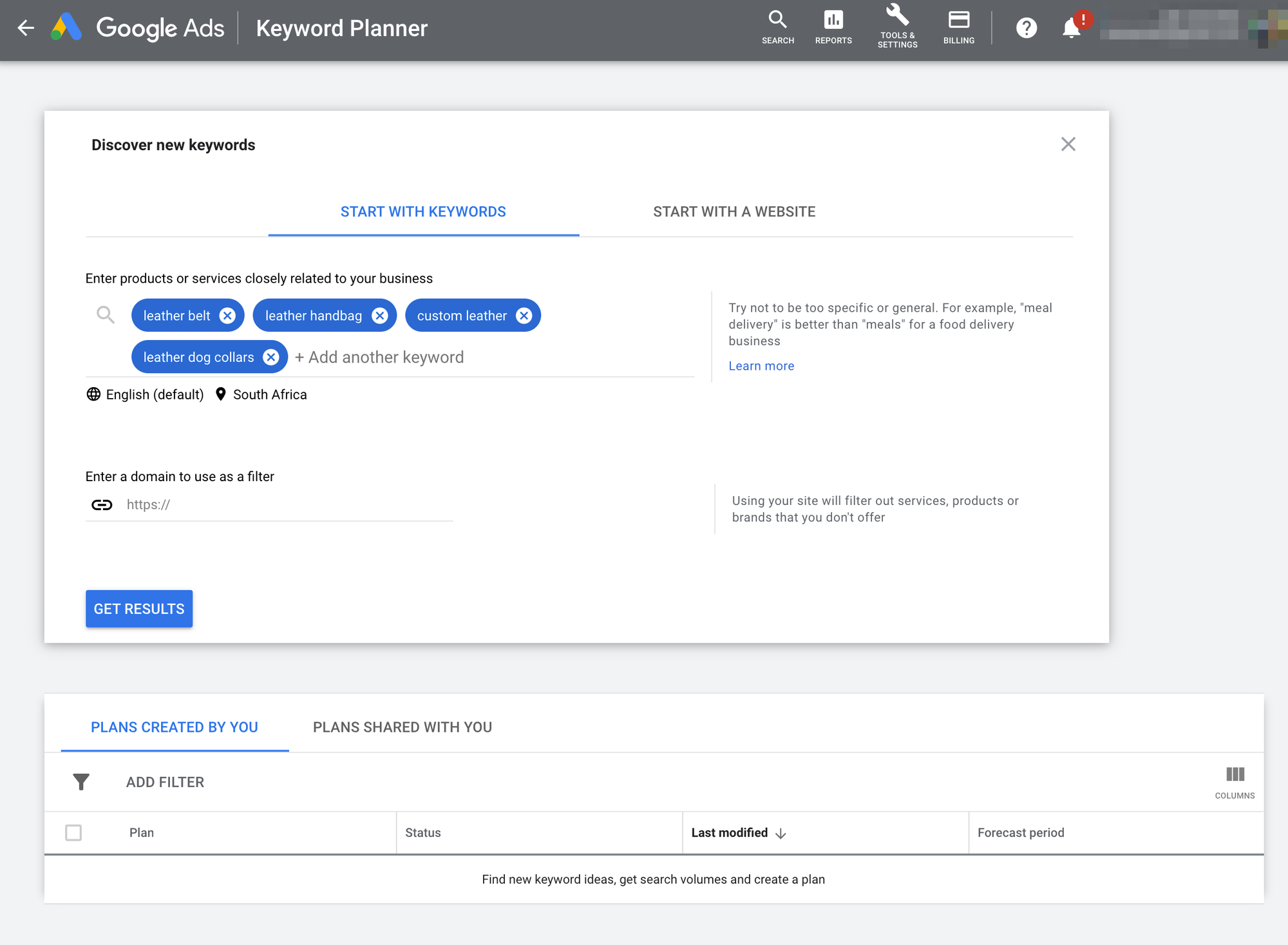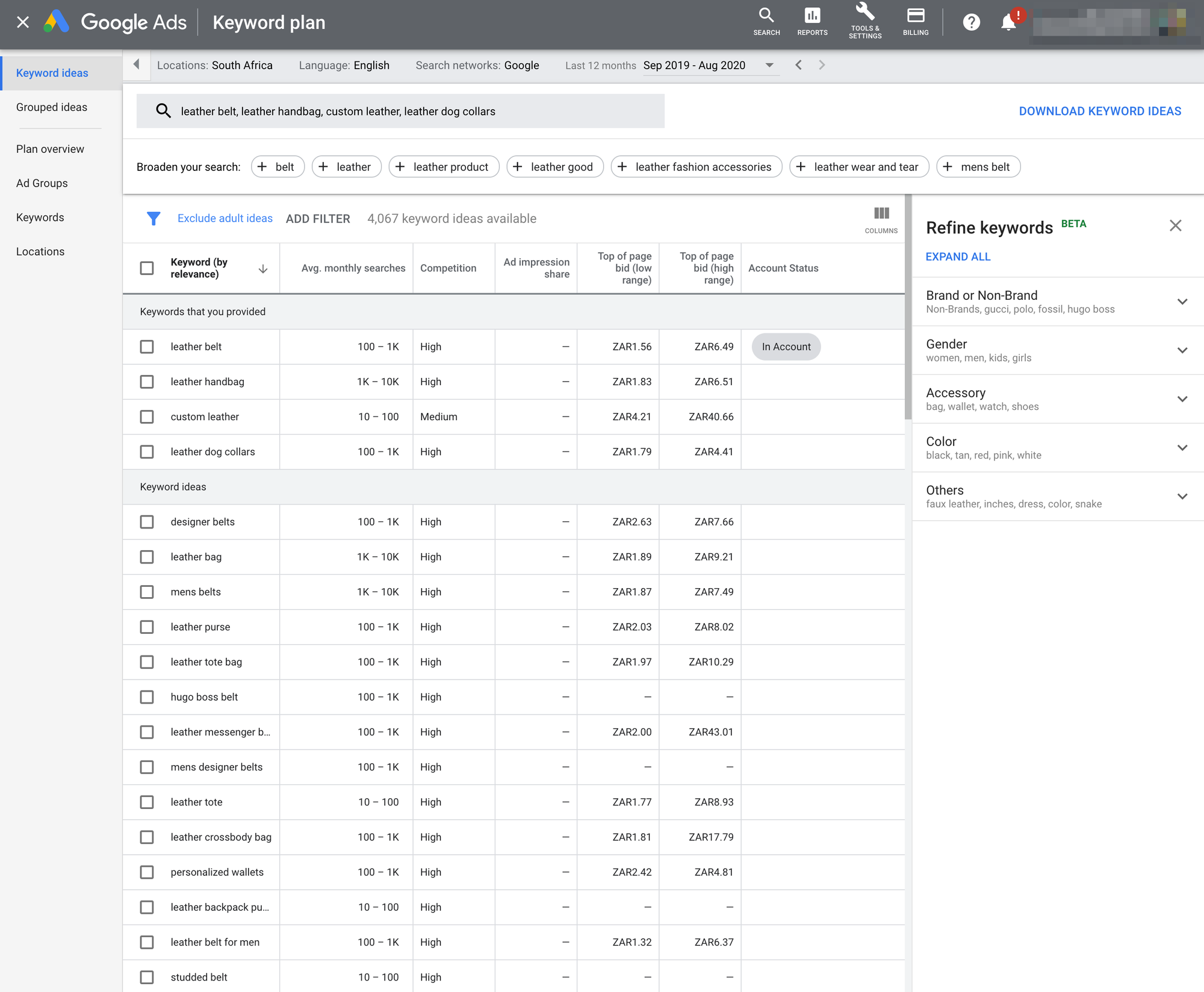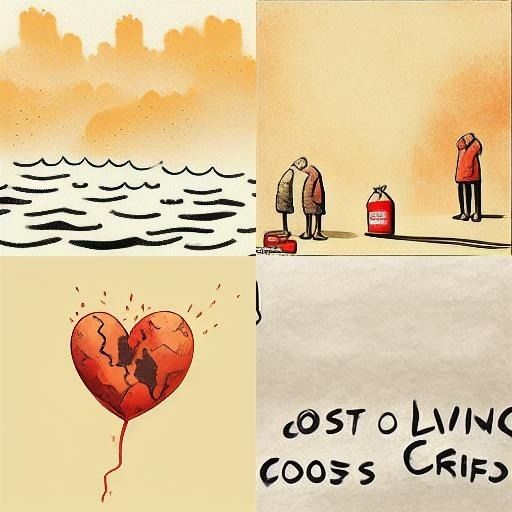Starting a small family business or side-hustle in 2020

Hello, grownups!
Like many of you, a lot of my family is unemployed. I won't lie - it's pretty darn stressful! Every human being is a breathtaking combination of creativity and smarts and skills, a miracle of evolution, and how we've created a global economy where millions of them are blocked from doing any paid work is truly mind-boggling to me. But here we are.
Recently, I've been giving some thought to how I can help in a more meaningful way than just giving money (not to trash giving money, it's an important thing to do). So, we've been working together to set up a small family business. I've run businesses before, but never with my family. It's been a TRIP, and pretty damn fun, and I thought I'd share some of my most helpful tips, in case any of you are thinking about starting a new side-hustle of your own, or supporting a family member in starting theirs.
To be clear, the goal here isn't to build a high-growth unicorn startup that will let them buy a mansion with a swimming pool of doubloons. The goal is to get in an extra couple of thousand rands a month to stretch the household budget. It's also to help re-empower them, because spending months and months in a cycle where you want a job but can't find one is pretty damn depressing, as I'm sure you can imagine.

Look, big disclaimer: I'm not a business genius. There are many people in the world who have much more experience than I do at starting successful businesses, and you should probably take their advice rather than mine. But I have started a lot of businesses, and coached a lot of young entrepreneurs, and I really like writing simple step-by-step guides to things, as you probably know by now 😉
So here's my very simple "get started" guide to launching a small business or side hustle in 2020. These steps apply mostly to selling things on the internet, and they're geared towards simple producty businesses.
Pre-amble: don't lose sight of the first important thing
Your most important job when starting a business is finding product-market fit, which is the fancy way of saying, finding a product that people really want to buy. This is a process, not a revelation that will come to you in a blinding flash of brilliance at three in the morning. The angel Gabriel will not descend in a stream of light and whisper to you, "Cactus socks! The people want cactus socks!" Sorry, but finding a viable business idea will take some work.
Here's how you do that: you start out with an idea of what people might want, then you actually go and get feedback from them, and refine your product so that it meets their needs better. Repeat that cycle as many times as you need to, until people want your product so badly that you can't produce it fast enough to keep up with the demand. It sounds easy enough, but you would be amazed at how many people skip this most important step.
Most small businesses that I've seen fail, failed because they lost sight of the fact that finding product-market fit was their first important job. It's extremely easy to get side-tracked worrying about a gorgeous website/brand/app/business cards/social media account, or spending too much time polishing up the product itself until it's stupendously amazing, or setting up a bulletproof accounting and compliance system. Those things are all important, but they are not the first important thing. You can polish up your product all you want, but if it's not actually something that enough people desperately want to buy in the first place, then you have a hobby, not a business.
Do not over-invest in your idea until you find product-market fit, because you're only making it harder to change/adapt the idea as you get customer feedback.
The best way to get feedback is simply to try to sell something, and see if people will buy it. And as much as possible, try to sell things that you haven't actually made yet. I know that sounds weird, but I swear there's a logic to it. Eric Reis popularised this approach in his book The Lean Startup. The book is very tech-business focussed, but the basic insights apply to any type of new business, and I do recommend giving it a skim (or watching a quick summary like this one).
Finding product-market fit is the first important thing. Do not forget the first important thing.
Then, when you're ready to get started, here's what to do:
Step 1: Find an idea
Even better, find a few ideas. The thing about starting a business is that most of your ideas will fail, so you have to try a lot of them.
If you're stuck, it's usually a good idea to start off by asking, what do I already have? You already have skills that many other people don't. You live somewhere, which means you have special insights into what people in your local community need. You might own power tools, or a car, or a Labrador Retriever who you've trained to pick pockets, or something else that could be turned into a working asset with some creativity.
Focus on stuff you can productize, which is a fancy way of saying 'stuff you can resell over and over again'. It's much easier to sell a copy of the same t-shirt 100 times than to sell 100 unique t-shirts once. It was much easier for me to write a book about money than it was to sit you all down and explain how money works to each of you individually (as fun as I'm sure that would have been).
So, write down a number of business ideas, and then circle the ones that you think solve a pressing problem that people have, that you can feasibly do, and that are productizable. Narrow down your list and decide where to begin.
Step 2: Turn your idea into a value proposition
Figure out exactly who your product is for, and what problem it solves for them (a value proposition, in business-speak). Be crystal clear about this, but know that you'll refine it a hundred times as you learn more and keep looking for product-market fit. Still, you need to start somewhere!
There are a lot of different models or frameworks to help you do this. The one I like best is Storybrand, because it helps you boil your idea down to a single sentence. Here's a good intro video to this approach, and here's another one.
Step 3: Do some competitor research
Not, like, days' worth, but you should spend at least an hour or two doing some homework to figure out what the existing options are today, how they're priced, where they're finding customers, and what you can do better than them. (Bear in mind that "better" might just mean "closer to your customers" in many cases.)
Don't get disheartened if you find another business that's exactly like the one you wanted to build. Original ideas aren't important in business. Yeah, I said it. Obviously, don't try to exactly copy another business to the extent that someone might confuse you for them, but also don't feel like you have to go back to the drawing board just because there's another business out there selling vegan baking kits or whatever. It's a big world and there's room for both of you.
For bonus points, go play around with Google Keyword Planner and see what terms people are Googling. Say leatherworking is your hobby, and you want to start selling custom leather goods. You're not sure what products to focus on. So maybe you would check the terms "leather belt", "leather handbag", and "leather dog collars".

Here you'll see that people are most interested in leather handbags, from those options, and that it would cost you about R6.51 to appear at the top of a Google search when people type in that search term. Google will also suggest some other related ideas that people are searching for.

You certainly don't need to use Google Keyword Planner! Just do whatever homework will help you understand your customers a little better.
Step 4: Make a prototype
Note that I'm not saying, GO AND SOURCE FIFTEEN MILLION UNITS OF WHAT YOU WANT TO SELL. I'm saying, go and make ONE. Even better, go and make a mockup of one. Make something that's enough like the real thing that you can get a good sense if people will buy it, but try to invest as little as possible into your prototype. It's a careful balance to strike.
Some examples:
- If you're thinking of selling a course you'll deliver over Zoom, write an outline for the course, and maybe make a flyer advertising it. Don't actually start putting together the course content until you've taken real bookings.
- If you're thinking of making face-masks with ten different hilarious patterns, make one so that you can figure out roughly what it will look like, and then use a photo editing app to mock up the other nine designs.
You get the idea.
If you need to create posters, flyers, social media posts or anything like that, there are some wonderful free tools you can use now to make gorgeous things without knowing a damn thing about design. Two of my favourites are Canva and Over.
Buying loads of a thing makes your cost-per-thing pretty low. Buying one of a thing is usually much more expensive. That means that you will probably lose money on the first few things you sell. That is normal. Do not get suckered into buying in bulk before you have found product-market fit. Repeat it again: don't lose sight of the first important thing.
You should put a price on your prototype to see if people will buy it. You can tie yourself in knots doing loads of research about cheap suppliers, figuring out the right profit margin etc. When you're just starting out, I would suggest just slapping on the same price as your most similar competitor. You can always tweak the pricing later. If you want to cover your butt and make sure customers aren't mad if you inflate your prices later, clearly mention a "special launch price" or something.
Step 5: Create a brand (optional)
Again, don't over-think it at this point, but you might want a name for your little business. Run your name idea through something like Namecheck.com to make sure that the social media handles and website domains are available, and check the national register for businesses in your country to make sure no-one's registered it there (here's South Africa, here's the UK).
If you need a logo for cheap or free, try Fiverr, Tailor Brands, Namecheap or Canva.
You can honestly skip this step and come back to it later once you're sure you can actually sell your products.
Step 6: Try to sell your stuff!
Here's where we check if people actually want your product. Try to sell it!
At first, do this in the simplest and most straightforward way you can: go to them, don't try to bring them to you. This could mean:
- Actually calling up / visiting potential clients.
- Seeing if you can sell your product on your own social media profiles.
- Listing your product on an existing marketplace like HelloPretty (SA), Etsy, or Facebook Marketplace.
- Putting up flyers in your local supermarket/community bulletin board.
Each of your first customers is a GOLDMINE of potential feedback. As much as you can, try to engage them about what is and isn't working for them about your product, and what would make it better.
Try to sell, then revise the value proposition, sell, revise, sell, revise, and keep doing this until you feel like the response you're getting from people is:

Congratulations! You now have a viable business. Now you can help it to grow up.
What happens next?
At this point, you've probably sold a few prototypes of your product, and gotten good feedback from your customers. Now you want to start investing a bit more into your business, to help you sell more of the products, reduce your costs, and reduce the amount of effort that each product takes to make and sell.
It's also really important that you build some kind of system to help you track and measure the money. Depending on how complex your needs are, this might mean:
- Open a separate bank account to keep all of the business costs and income separate to your own.
- Sign up for a free accounting and invoicing app like Wave (great if you're freelancing).
- Sign up for a more sophisticated paid accounting tool like Xero (better for businesses that plan to have staff and other more complex needs).
- Register an actual business. It's important to do this early on if it's a business you hope to sell one day, or get investors into. It's not that urgent if you're unlikely to do that.
Please make sure that you know what the rules are about paying taxes as a small business owner in your country, so that you're not unpleasantly surprised by a big tax bill down the line. You likely won't have to pay taxes until you're earning a fair amount of money, though (or if you're Donald Trump - seeeeeethe).
You might want to build a home for your business on the internet. Again, don't overcomplicate this when you're starting out. You really don't have to know how to code, or pay a professional web developer: there are so many easy-peasy tools these days that help you get an online store up within a couple of hours.
- If you need an online store, Shopify is brain-meltingly easy to set up. Here's an easy step-by-step guide. For processing payments, I recommend plugging in Stripe in most countries, but Payfast in South Africa. For shipping in South Africa, try DawnWing. Globally, look at UPS, FedX or DHL, or just use the default Shopify Shipping if it's available in your country.
Woocommerce can be cheaper to set up, but I personally find it horrifically klunky.
- If you don't need an online store, but you do need a website, Squarespace is your best bet. It's not free, but it's the simplest to use, and their templates are gorgeous.
- If you're on a serious budget and you just need a simple landing page, try ConvertKit. The free plan will get you quite far. ConvertKit is also a great option for building up an email database (which you absolutely should be doing, more on this below). Wix also has a free plan.
- Many businesses will be fine with just a Facebook page.
- If you need to jazz up your site with free illustrations, try Undraw. Looking for free photos? Try Pexels or Unsplash.
Building a web presence doesn't mean anything unless you get people to it. Otherwise, it's like you've put up a billboard in the middle of the desert. This means that if you're serious about selling things online, the best skills you can invest in are simple online marketing skills.
The good news is that there are a bajillion free courses online that will teach you the basics. The ones I recommend most often for absolute beginners are Google's Fundamentals of Digital Marketing course and Brad Batesole's Online Marketing Foundations. You might also want to find deep-dive courses into specific topics like the Facebook Business Ads Manager. For most people selling stuff online, you'll get the most value from focusing on these three things at first:
- Google Analytics (which you can use with Squarespace and Shopify)
- Facebook Ads (which also covers Instagram)
- Google Ads
In time, you probably want to start adding stuff like email marketing and social media, but get your head around paid ads first, because it will get you the quickest bang for your buck.
Working as a team
One last word on family dynamics.
Starting a business as a family could bring you together, or it could just poke at existing emotional bruises and reinforce unhealthy dynamics. Tread carefully, move slowly, and listen much more than you talk.
I'm generally a pretty helpful and easygoing person, but put me in a stressful situation and suddenly I'm Miss Trunchbull from Matilda, bossy and impatient and extremely unlikeable. My poor family have had to deal with more of this nonsense from me than anyone else. So, in this case, I'm trying to be extra conscious of my worst tendencies and keep that shit under control.

You probably have some pretty unpleasant tendencies hidden somewhere in your personality too! Make sure that when you approach a project like this, you're ready to do so with as much love and humility and self-awareness as you can. Otherwise, it's not worth it.
If you're the one who's historically supported your family financially, and you're proposing helping them to set up a business that you won't be an active part of, make sure that you're letting them take the lead. Please do not barge in giving unwanted advice and telling them what they need to do to fix their problems. They almost certainly understand their problems better than you do. The goal is to help them to solve their own problems, by removing the biggest barriers standing in their way.
Here's what removing barriers might look like:
- Offering some "seed capital" to help them create their first prototype, buy a working asset, pay for the first few months of online advertising, or whatever else they need.
- Being available to listen, ask good questions to help them figure out their own business idea.
- Offering to pay for a course, or to support them while they complete a course that will help them to start their business.
- Helping them to see where they have more resources available than they think. In my case, this meant pointing out to a less tech-savvy family member that one of our younger family members was also unemployed at the moment and might be willing to learn all the online marketing stuff and be responsible for it - they were! Win-win-win all around.
- Being very clear about your own limits and boundaries (kindly), so that they have a realistic idea of what you can and can't help with. This prevents you from feeling overwhelmed, and it helps them to plan better.
- Asking them how THEY want you to help.
- Forwarding them this stupendously helpful article! 😉 I'm making this one free, so share away.
Times are tough out there. The jobs are gone, and many of them aren't coming back any time soon. We need radical ideas like universal basic income guarantees or public work programmes, but we're also going to have to be creative about how to help the people we love in the here and now.
At the end of the day, if all you want is to support a family member financially, just give them money. It's MUCH simpler. But there really are few things in life more empowering than knowing how to make your own money when you need to. If your family wants to give it a try, support them! Who knows? It might be as much of an adventure for your family as it's been for mine.
Wishing you product-market fit, and a swimming pool filled with gold doubloons,
Your friend Sam
National Wills Week!
Y'all know I'm pretty evangelical about how everybody needs a will. Well, South Africans, National Wills Week is happening between the 26-30th of October. Lawyers all around the country will be helping people draft their will for free, or super cheap. So if you, or someone else you care about, doesn't have one yet, now's your chance.
Find a participating lawyer here: https://www.lssa.org.za/our-initiatives/advocacy/national-wills-week/
Updates from Sam-land

- Speeeeeaaaaking of selling stuff online, I've put up an online store where you can buy books from me directly, but you can also buy EXCELLENT MERCH featuring some of Nanna Venter's charming illustrations. We'll be adding more goodies down the line (like stickers for your fuckaround fund bank cards). Hold tight on actually buying things, because I'm definitely going to send members a special discount coupon in next week's mail, but I'd love your feedback in the meantime (see what I did there? 😉).
- I'm still having a ridiculous amount of fun writing a choose-your-own-adventure story about climate change. I thought learning more about this topic would make me feel hopeless and frightened, but it's just making me feel really motivated about how important the next few years are going to be.
- After putting it down for a couple of months so we can look at it with fresh eyes, Dale Halvorsen and I are about to start the next round of edits on Magpies, our creepy young adult horror novel. This brings me ALL the joy.
- PING! What was that? Your phone buzzing to let you know that the price of your favourite asset has just dropped? Or that you've just hit a savings goal? Or that your #high-risk investments are now over 5% of your portfolio? Lettuce now lets you set up sophisticated custom alerts for almost anything.
SMOOCH!
S





Member discussion